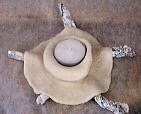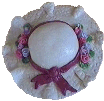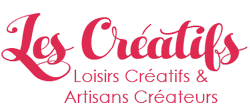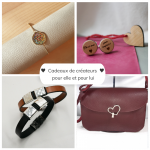Salt dough tips
Indispensable tools:
| A | plastic | knife | , ideal for children. |
| Wooden picks | Used to assemble the
elements of a model. |
| A rollerNecessary | for flattening. |
| A garlic pressTo | model hair and animal fur | .
| Aluminum fo |
il| Crushed into balls or cubes, to hold the dough in place while baking. |
| A paintbrush | To moisten and glue together the elements of a model. |
| Wire | In the shape of a hair hook, to be inserted into the back of the model for hanging on the wall. |
|


|
Modeling
For worked objects, you need to allow 1 to 2 hours for modelling. So you need to have a bit of time on your hands!
 |
Remember to regularly moisten a model with a brush while you're working, so that the surface doesn't fade. As soon as the modeling is complete, place it on a baking tray lined with parchment paper, in the already hot oven.
|
 |
For the most fragile models, to avoid damaging them by moving them from the work surface to the baking tray, place a piece of parchment paper on the work surface and slide it onto the baking tray.

|
Thick modeling is more difficult to bake. Hence the tip: form a ball of aluminum foil and cover with dough for the thickest or chubbiest elements! This is the case above for the large hat: the dough is smoothed around a large ball of aluminum foil placed in the center of a round of dough. A ribbon of dough is added with a bow, followed by flowers or butterflies... A final tip: the edges of the hat are "marked" with a small wicker basket applied all along the wide brim.
|
Baking
Time: 3 to 4 hours at 100° in a convection oven, filling two or three oven racks.
After one hour, remove the models from the baking tray and the parchment paper and place them on the rack: this way, the back will also cook. By keeping the temperature very low, the
salt dough dries without deforming. It's essential that the back remains flat if you want to use the models as decorations on wooden supports (see the many models).
models can also be left to dry for long periods on a radiator or in the drawer of an inset fireplace, but only under strict supervision!
 |
Thesupport (a braid, a wreath) or, on the contrary, small elements (the plates of this china cabinet) can be fired beforehand: this facilitates assembly.
If you have any dough left over, make these small elements in advance, especially the heads of the figurines, with a wooden spike inserted through the neck to allow assembly with the modelling to come: it's very practical to have only the hair or a hat to put on without risk of deformation. |
 |
A model is dry when the blade of the knife, when tapping it, emits a clear sound (on both sides, of course). |






